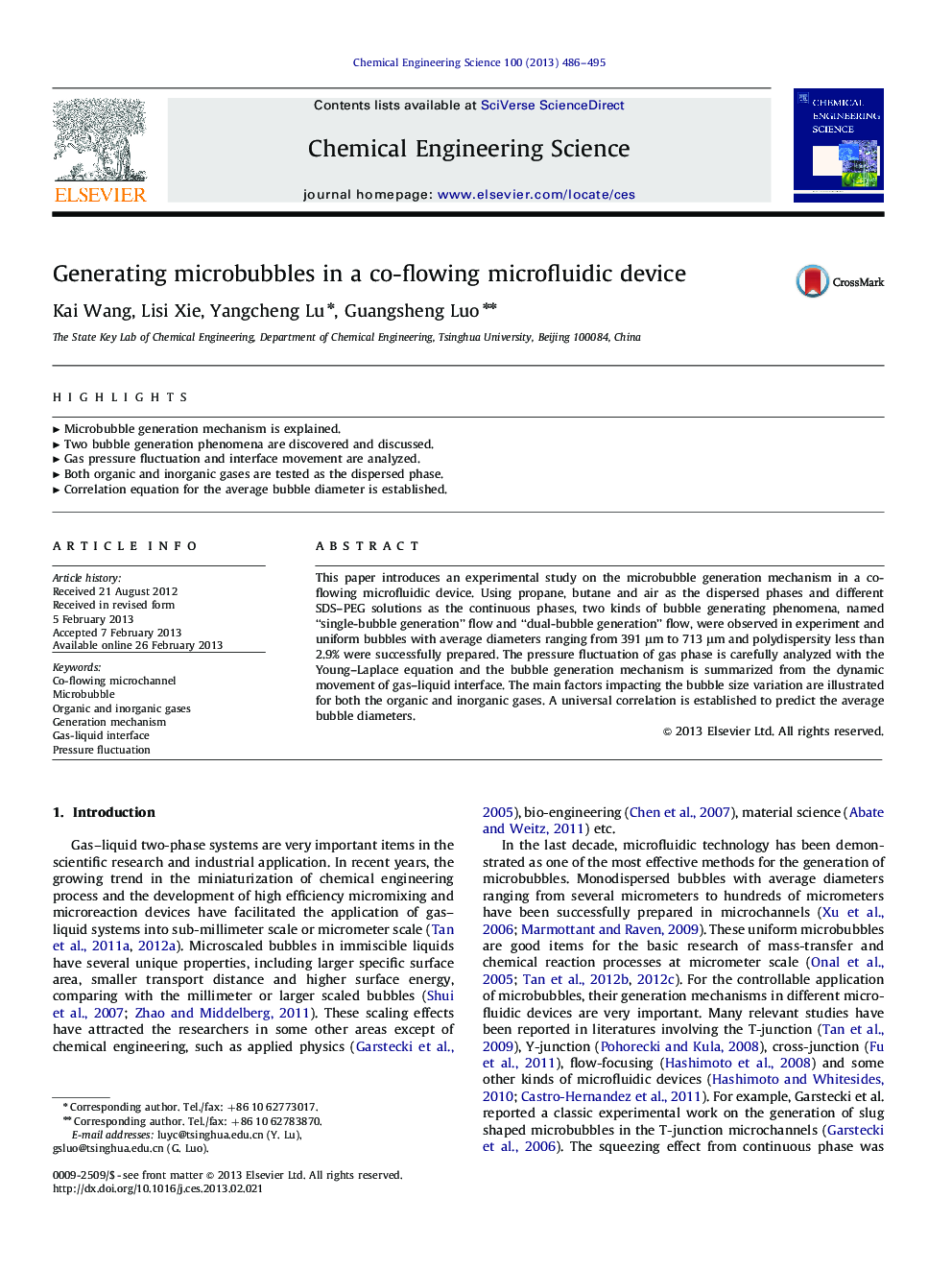| Article ID | Journal | Published Year | Pages | File Type |
|---|---|---|---|---|
| 155093 | Chemical Engineering Science | 2013 | 10 Pages |
This paper introduces an experimental study on the microbubble generation mechanism in a co-flowing microfluidic device. Using propane, butane and air as the dispersed phases and different SDS–PEG solutions as the continuous phases, two kinds of bubble generating phenomena, named “single-bubble generation” flow and “dual-bubble generation” flow, were observed in experiment and uniform bubbles with average diameters ranging from 391 μm to 713 μm and polydispersity less than 2.9% were successfully prepared. The pressure fluctuation of gas phase is carefully analyzed with the Young–Laplace equation and the bubble generation mechanism is summarized from the dynamic movement of gas–liquid interface. The main factors impacting the bubble size variation are illustrated for both the organic and inorganic gases. A universal correlation is established to predict the average bubble diameters.
► Microbubble generation mechanism is explained. ► Two bubble generation phenomena are discovered and discussed. ► Gas pressure fluctuation and interface movement are analyzed. ► Both organic and inorganic gases are tested as the dispersed phase. ► Correlation equation for the average bubble diameter is established.
